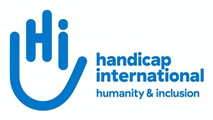Day of People with Disabilities 3.12.
Munich (ots) – People with disabilities are particularly affected by humanitarian crises, natural disasters and wars. They have greater difficulty accessing humanitarian aid and usually need more support in emergency shelters or refugee camps. On the occasion of the Day of People with Disabilities, the aid organization Handicap International (HI) is calling for humanitarian aid to be made more inclusive.
An estimated 1.3 billion people worldwide (16%) live with a disability. They are particularly at risk during conflicts and wars and are often overlooked. “People with disabilities must not be forgotten in humanitarian aid measures,” demands Dr. Inez Kipfer-Didavi, Managing Director of Handicap International Germany. “In particular, those with limited mobility often cannot be evacuated in the event of a disaster. In addition, most emergency shelters are not adequately equipped and are rarely barrier-free accessible. Wheelchairs or glasses are lost, and access to drinking water and food is often difficult,” says Kipfer-Didavi.
High risk of natural disasters
The consequences of climate change also particularly affect people with disabilities. They are four times more likely to die in the event of a disaster such as a hurricane or flood. According to the United Nations Office for Disaster Risk Reduction (UNDRR), only a quarter of people with disabilities can easily follow evacuation instructions. Many people don’t know about their community’s disaster plans. The majority are unaware of the risks and many are stigmatized and often forgotten by communities. “Disasters do not affect everyone in the same way,” explains Jennifer M’Vouama, HI disaster preparedness expert. “A lot depends on where we live, our socioeconomic background, our gender, our age and whether we have a disability or not.”
HI calls for the expansion of inclusive disaster preparedness
People with disabilities must be included in the preventative measures from the outset: e.g. by translating information into sign language, using different formats for information dissemination such as video, audio, text and illustrations, and using color contrast to increase readability. “Whether it is general information to educate people about the risks or emergency warnings, the challenge is to design it so that as many people as possible can benefit from it. We can do this by varying the distribution channels and methods and so on “Include people with limited mobility, people with hearing or visual impairments or people with psychosocial disabilities from the start,” explains Jennifer M’Vouama.
Questions & Contact:
Huberta von Roedern
Head of press and public relations
Mail: h.vonroedern@hi.org
Tel.: +49 89/54 76 06 34
Mobil: +49 151 73 02 32 06
www.handicap-international.de
